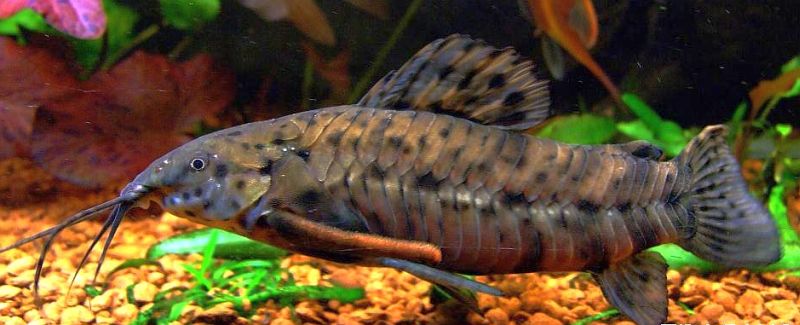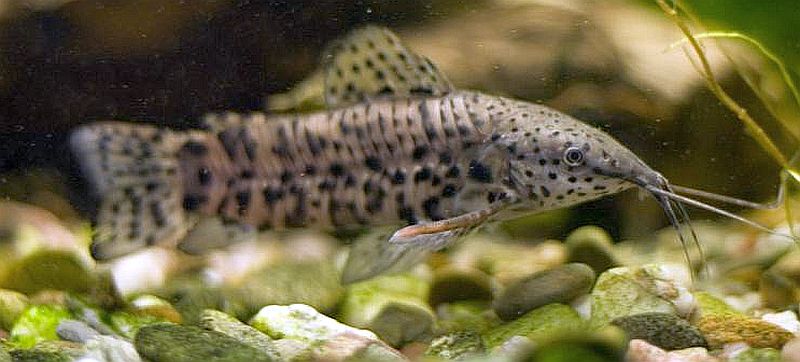The Hoplo Catfish (Hoplosternum thoracatum)is found in Brazil, Guyana, Martinique, Paraguay, Trinidad, Venezuela and throughout the Amazon River basin. They are most frequently found in standing shallow waters that have a dense growth of plants.
The Hoplo Catfish (Hoplosternum thoracatum) is synonomus with Megalechis thoracata, Callichtys thoracatus, Hoplosternum orinocoi, Callichthys thoracatus, Callichthys longifilis, Callichthys personatus, Callichthys exaratus, Hoplosternum thorae, Hoplosternum longifilis, and Hoplosternum magdalenea.
Tropical fish keeping enthusiasts commonly defer to Hopolo catfish or Brown Hopolo as the most commonly used name in fish shops.
Hopolo Catfish are colored dark brown to dun with an almost black back and a whitish belly. The entire body of the fish is dotted with black spots of varying sizes, and their first pectoral fin is usually colored a reddish brown at the edges.
During breeding, the belly of the male develops a blue violet sheen. Males also develop enlarged, red pectoral spines with hooks at the tips that are used to defend their breeding territory against other males.
The Hopolo Catfish prefers a densely planted aquarium with a dark sandy or fine grained smooth bottom substrate, some driftwood, and plenty of open areas for them to dig and root around in. The tank should have densely planted corners and floating plants
to provide some shade, especially during breeding when they can become aggressive to other males.
Although the Hopolo Catfish is an extremely hardy air breather that can survive in the worst possible conditions, they are best housed in clean well filtered water with a neutral pH.
Hoplosternum thoracatum are frequently bred in aquariums however the males become pretty aggressive during breeding. Spawning is triggered by introducing cool water into the breeding tank to quickly lower the water temperature. Males in breeding condition will build a bubble nest covered with floating plant material. When the eggs are released by the female below the nest, the male fertilizes them, takes them into his mouth, and blows them up into the floating nest.
After spawning has been completed, remove the parents from the tank or the parents may eat the eggs or offspring. The eggs generally hatch out after four days and after two more days, the fry should be free swimming. Feed the fry baby brine shrimp or crushed pellets until they are able to eat adult foods.
Hopolo Catfish are easy to feed. In the wild, they eat insects, insect larvae, and detritus. In an aquarium environment they will accept live, freeze dried and frozen foods, most types of sinking pellets, and uneaten flake foods.
Hopolo Catfish are usually offered for sale by tropical fish keeping shops when they are 1 1/2″ to 2″ in size.
Minimum Tank Size: 30 Gallons
Care Level: Easy
Temperament: Peaceful
Aquarium Hardiness: Hardy
Water Conditions: 65-85° F, Up to 20°H , pH 5.5 – 8.3
Maximum Size: 7″
Color Form: Silver, Brown
Diet: Omnivore
Compatibility: Great in community tanks
Origin: Throughout the Amazon Basin
Family: Callichthyidae
Lifespan: 5-8 Years or more
Aquarist Experience Lever: Beginner




